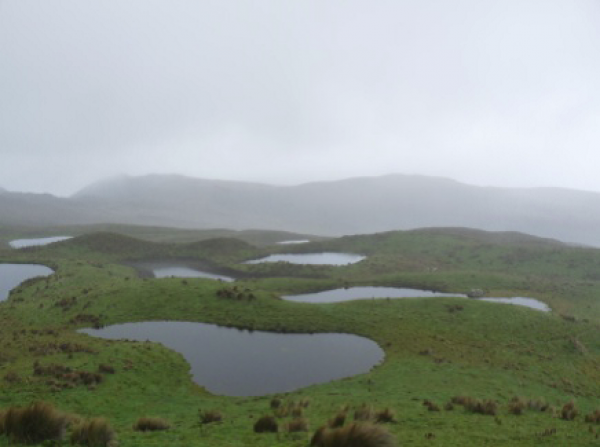Local population plays a key role in assessing ecosystem services at the Ramsar Site ‘Complejo Llanganati’, Ecuador

An important achievement in the process of assessing ecosystem services in Llanganates was the involvement of local people, the direct beneficiaries and users of ecosystem goods and services within the region. With the participation of local stakeholders, information was obtained rapidly, economically and in a participative manner, creating local capacity, and producing concrete and robust results, in agreement with local reality. Llanganates is the first site in the continental Americas, and the first among high Andean wetlands, where this toolkit has been implemented.
The toolkit, designed by BirdLife International and others, to assess and monitor ecosystem services, is strongly grounded in the participation of the direct users of the ecosystems goods and services.
IBA Llanganates
The Important Bird Area (IBA), Parque Nacional Llanganates (EC056), including the Ramsar Site ‘Complejo de Humedales Llanganati’, is one of the most important high Andean wetlands of Ecuador, providing water and other ecosystem services to a population of approximately 20,000 people. At present, the site faces multiple threats, as documented in the National Park’s management plan (currently under review) and the draft Ramsar Site Action Plan. Both these documents define the main areas of work for the management of the area.
Aves y Conservación (BirdLife in Ecuador) seeks to improve the conservation status of the high Andean wetlands at Llanganates by strengthening capacity for environmental management among the local population through the implementation of activities within the Park’s Management Plan, and by supporting the preparation of the Ramsar site Action Plan.
These activities have been funded by the Aage V. Jensen Charity Foundation and the U.S. Fish and Wildlife Service Neotropical Migratory Bird Conservation Act.
People and ecosystem services in Llanganates
Assessment of ecosystem services was implemented in two stages; the first stage set priorities among ecosystem services according to local requirements and regional impacts, the second involved gathering information on these services in the field. This type of assessment has powerful advantages over other similar exercises, given the strength of the involvement of the local population.
Specifically in Llanganates, the IBA’s Local Conservation Group played a leading role in the following aspects of the process:
Identification of threats in the area – The following threats were identified: agriculture and livestock within the protected area, electricity production and mining, illegal hunting and deforestation, forest fires, trout (invasive species), road construction and lack of control and vigilance on the part of Environment Ministry personnel in the area.
Providing opportunities for building consensus between the community and other local stakeholders - The local population was able to converse with the local authorities in a friendly manner, and experience at first hand the environmental problems in the region.
Participative priority setting of ecosystem services - Local stakeholders decided whichecosystem services were necessary for community development in the area, thusprioritising the following services: water (for drinking water, irrigation and hydroelectricity generation), tourism, paramo grasslands as fodder for livestock and for carbon storage.
Involvement of the Local Conservation Group in field work - the support groupplayed a leading role in gatheringinformation on local uses and costs of the ecosystem services among the local communities.
The experience created awareness of ecosystem services among local inhabitants and strengthened the Local Conservation Group’s capacity to replicate the experience in other wetlands and IBAs of Ecuador. Finally, the experience facilitated the active participation of the local population in general, including local and regional government, empowering them in the management of natural resources in the Protected Area and its buffer zones.
Aves y Conservación is currently working with the BirdLife Secretariat to further analyse the results and develop specific adaptations of the toolkit methodologies for use in paramos and high Andean wetlands. This information will be distributed shortly. Based on this experience, Aves y Conservación recommends applying this tool for assessing ecosystem services in other places and ecosystems and is willing to share its experience with other organizations if requested.
More information on the project:
- Adrian Soria: asoria@avesconservacion.org Llanganates Project Coordinator, Aves y Conservación

Facebook comments